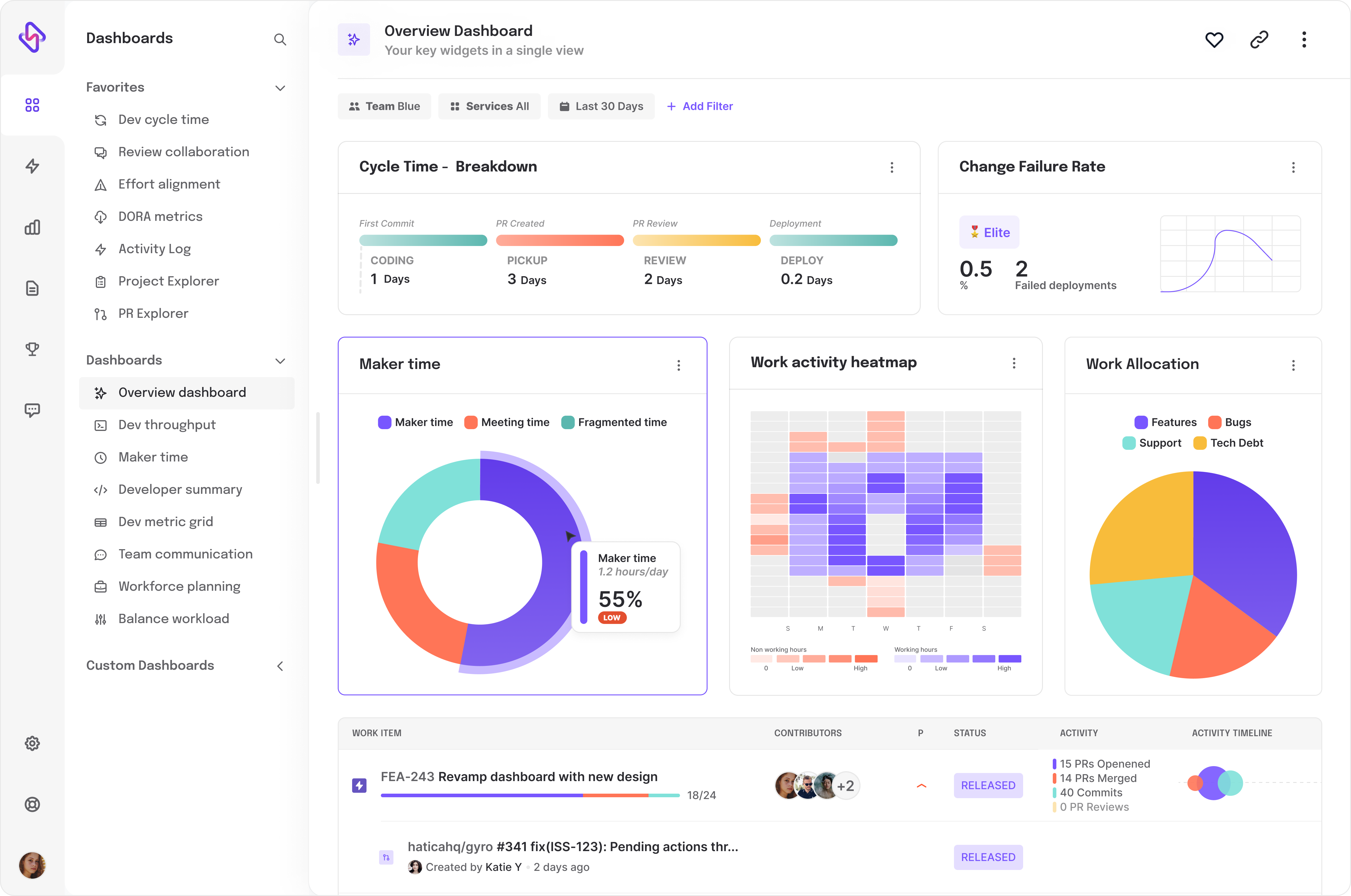For any remote scrum team to be successful, it should follow the core scrum values of transparency, clear communication, and continuous improvement. The team's success entirely depends on collaboration, communication, and transparency. The remote scrum team should have a solid plan that has the following strategies:
1. Focus on Collaboration
Collaboration tools are crucial to bring all the team members of the remote scrum team together for comprehensive and coherent product knowledge and development. However, time differences can be a road blocker for seamless collaboration and communication. Hence, managers should focus on asynchronous communication which involves the team to collaborate without real-time interactions. The collaboration channels should be relevant, accessible, and transparent to leverage them rightfully. Three basic tools to facilitate collaboration are:
- Whiteboards: Traditional offices use work progress boards for discussing product plans, blockers, and work progress. Whiteboards, like Miro and Zoom, could help the teams to replicate that environment with a digital whiteboard.
- Project management tools: Project management tools like ClickUp allows managers to allot work and track progress of the team members. Also, it enables them to assign tasks to individual team members and create sprints beforehand.
- Communication tools (Chanty, Slack, Microsoft Teams): Communication tools help to discuss work progress, blockers, and product updates to have unified project knowledge.
Tips to Increase Collaboration
- Set clear guidelines for asynchronous communication, such as response times and update schedules.
- Use collaboration tools like Miro, Zoom, or virtual whiteboards to replicate the in-office environment.
- Ensure that all team members have access to and are comfortable with the chosen collaboration tools.
Project management tool selection should be done carefully. It needs to increase efficiency and handle the workload of a virtual scrum team. The tool needs to be able to:
- Track realistic sprints
- Add assignee to avoid ambiguities
- Schedule tasks with realistic deadlines
- Scale tasks and reduce stress for internal teams
- Update work progress in real-time.
A better work progress tracking process helps in efficient sprint planning and task allocation. Also, the work progress is easier to review as everything is centralized on a single platform.
- Carefully evaluate project management tools based on your team's specific needs, such as tracking sprints, assigning tasks, and real-time updates.
- Choose a tool that integrates well with your collaboration and communication tools for seamless workflow.
3. Scrum Flexibility
A virtual scrum team needs to be flexible to ensure the work is completed with no extra backlogs. For instance, a daily standup at 9 am sharp might not be feasible for all the members. Instead, shifting to an activity tool where all the members would update and remain in sync is better for remote scrum teams. Your end goal should be to attain the end goal and not strictly follow the SOPs. If you can increase efficiency with tweaks here and there, then your team should embrace those changes.
Tips to Increase Flexibility
- Adopt a culture of adaptability where team members are open to making small changes for better efficiency.
- Regularly review and adjust your team's processes to identify areas for improvement.
4. Better Sprint Planning
Sprint planning is crucial for a scrum team. It is the core of work progress. A manager needs to measure the work done, backlog, and current tasks allocated and proactively plan sprints for the team. It requires constant updates from the team and effort from the manager’s end. Managers should use data from previous sprints to measure, analyze gaps, and enhance sprint planning.
Tips for Better Sprint Planning
- Use data from previous sprints to inform your planning and allocation of tasks.
- Collaborate with your team to understand their capacity and workload when planning sprints.
- Continuously monitor and adjust sprint plans as needed based on real-time progress.
Secondary backlog, constant updates, and multiple tools have one main goal to centralize information. Centralized information is vital to keep teams in sync and build transparency. Often scrum teams face the issue of duplication of work or misinformation. A centralized base helps in tackling such problems. Also, the manager could document all the vital project information to ensure data consistency throughout the team.
- Ensure all project-related information is stored in a centralized location that all team members can access.
- Implement version control and document management systems to avoid duplication and ensure data consistency.
6. Feedback, Progress Updates, and Project Visibility
Feedback and sprint retrospectives are great starting points for measuring work progress. Additionally, regular standups highlight work progress and assist in planning sprints accordingly. Analytics tools like Hatica assist in measuring the progress of your distributed development teams. It is a comprehensive platform that tracks your team’s work progress by integrating with different developer tools. It helps you identify bottlenecks until the deployment of issues. The manager gets insights into cycle time which help in better sprint planning. From burnout to unbalanced workload, Hatica highlights all the gaps in your virtual scrum team.
- Trust - Collect feedback, sprint retrospectives and team reaction using insights from data from tools like Hatica
- Self-reliance - sets realistic expectations and helps the teams to communicate better
- Continuously optimize processes and workflows - improves communication, efficiency, and the project's overall performance
Tips for Better Progress Update
- Schedule regular feedback sessions and sprint retrospectives to gather insights and identify areas for improvement.
- Use analytics tools like Hatica to track work progress, identify bottlenecks, and optimize your team's performance.
- Share progress updates and project visibility through centralized dashboards or reporting tools.
Promoting self-reliance is crucial in scrum development, where teamwork is vital. Team members should take responsibility for their tasks and how they help the team. It's important to set clear expectations for everyone and make sure they do their part. But it's also okay to ask for help when needed, as problems will come up, and having support is important.
Interestingly, working together and talking about what each person is doing and what they can handle is a big part of being self-reliant in this situation.
- Encourage individuals to make their own decisions, consider the consequences, and take responsibility for their choices.
- Support individuals in finding solutions to challenges on their own, promoting problem-solving skills and self-confidence.
- Help individuals set achievable goals and expectations to prevent frustration and build a sense of accomplishment.
Are Scrum Remote Teams Worth the Effort?
70% of companies are planning to opt for a hybrid work model. Remote scrum teams may replace traditional work teams eventually. Hence, managers should focus on planning and tool deployment to manage remote scrum teams seamlessly.
The remote scrum teams help managers to adapt to dynamic product requirements. Finding the gaps and using the right counter-strategy can increase employee efficiency. Collaboration tools like Asana, Confluence, Slack, etc., and analytics tools like Hatica become a helping hand to run remote teams effectively when working with distributed teams.
Remote scrum teams are the need of the hour. With a strategic approach, managers can leverage them to better product delivery and improve workflows.
Request a demo to explore Hatica for getting the most out of your remote scrum practices.
Frequently Asked Questions
1. Why do Scrum teams fail?
The most common reason for a scrum team failing to meet their sprint goal is mainly because they simply don't have one. The team just hasn't identified and committed to a sprint goal and as such, they haven't got an expert to guide them, and they just push deliver stuff.
2. What are the disadvantages of a remote working scrum team?
When you're not in a shared office, team members will take breaks at slightly different times, may shift their hours a bit, and may have other distractions and challenges at home that mean they're available at somewhat different hours. The challenge is even greater if your remote team is spread across time zones.





